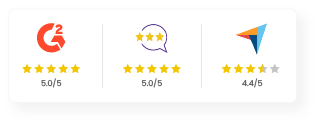Maximizing ROI with LMS Reporting & Analytics in the US

Companies in the US spend more than $340 billion on employee training and development every year, averaging over $1,500 per employee. This massive investment sustains a global ecosystem of content providers, technology platforms, and service firms.
Yet despite its scale, the sector is on the cusp of reinvention.
At the center of this transformation is the Learning Management System (LMS) market, now valued at over $20 billion. Originally designed to digitize instructor-led training, LMS platforms have become the transaction and record-keeping systems for corporate learning worldwide. In the US, they serve a dual purpose: ensuring regulatory compliance plus enabling workforce development.
But what separates organizations that extract real value from those simply checking boxes is how they use LMS reporting and analytics. The difference lies in turning data into insight, moving beyond completion rates to measure learning effectiveness, identify compliance risks, and connect training outcomes to business performance.
The Importance of LMS Reporting in the US
LMS reporting is no longer a back-office function. It is now central to how organizations in the US ensure compliance and optimize learning outcomes. Regulatory frameworks across industries ranging from finance to healthcare to manufacturing demand accurate tracking and proof of employee training. An LMS with robust reporting capabilities serves as the single source of truth, providing visibility into completion rates, assessment scores, and progression across roles and departments.
But reporting is more than just record keeping. It provides leadership teams with actionable insights, pointing very clearly to patterns in learner engagement, skill acquisition, and areas where training falls short. By understanding these patterns, organizations can continuously refine their programs, in turn, aligning compliance obligations with workforce development objectives. Effective LMS reporting transforms training from a cost center into a measurable driver of performance and growth.
Leveraging LMS Analytics for Enhanced Compliance
While reporting answers the question of “what happened,” LMS analytics addresses “why it happened” and “what should happen next.” Analytics allows organizations to identify gaps in compliance training, uncover trends in learner performance and very specifically pinpoint potential risk areas before they become compliance issues.
By analyzing engagement, completion patterns, and assessment outcomes, leaders can make data-driven decisions about how to deliver learning more effectively. Analytics also supports personalization: employees receive targeted modules that address their specific needs, increasing engagement and knowledge retention.
For US organizations that are navigating complex regulatory landscapes, continuous analysis ensures that their training programs remain current as well as aligned with evolving legal requirements. LMS analytics is the mechanism that transforms static courses into dynamic compliance management tools.
Agentic AI: Revolutionizing Corporate Training
Even as we discuss LMS reporting and analytics, the introduction of Agentic AI brings a new level of intelligence to LMS platforms. Unlike traditional AI which simply automates routine processes, Agentic AI can take initiative, interpret data and make recommendations to drive learning outcomes.
In practice, Agentic AI can dynamically adapt learning paths based on an individual’s performance and learning behavior. It can anticipate knowledge gaps, suggest supplemental modules and even generate learning content tailored to the learner’s role and current skill set.
This technology enhances LMS analytics by providing predictive insights: organizations can forecast compliance risks, anticipate training needs, and optimize workforce readiness. By integrating Agentic AI, companies gain a more precise, forward-looking approach to learning, ultimately maximizing training ROI and ensuring that employees are both compliant and prepared for future challenges.
Strategies to Maximize ROI through LMS
To truly capture the value of an LMS, organizations must implement strategies that leverage reporting and analytics effectively:
1. Customize training modules based on analytics
Use data to design learning paths that address skill gaps and align with employee roles. Targeted content improves engagement and learning outcomes.
2. Establish feedback loops
Collect insights from employees on training relevance and effectiveness, then integrate these insights into program design. Continuous improvement ensures that learning remains impactful.
3. Invest in comprehensive LMS tools
Platforms that provide advanced reporting, analytics, and integration capabilities support long-term savings and efficiency gains.
4. Embed learning into workflows
Training that fits seamlessly into day-to-day operations enhances adoption and application of skills. Analytics can identify the best moments to deliver learning for maximum impact.
5. Leverage predictive analytics for proactive learning
Use LMS analytics to anticipate skill gaps and compliance risks before they emerge. Proactive interventions ensure employees stay ahead of regulatory requirements and evolving business needs.
6. Align training with measurable business outcomes
Connect learning initiatives directly to organizational goals such as productivity, sales, compliance, or customer satisfaction. By linking training results to business metrics, companies can clearly demonstrate ROI and make strategic investment decisions.
When these strategies are combined, LMS platforms evolve from static repositories into dynamic tools that drive measurable business performance.
Challenges and Solutions in Implementing LMS Reporting
Implementing LMS reporting and analytics comes with challenges, particularly in the US context:
Data Privacy: With stringent regulations governing employee data, organizations must ensure that LMS platforms comply with privacy laws while still providing actionable insights.
Integration with Existing Systems: LMS platforms must work alongside HR, payroll, and performance management systems. Effective integration is key to creating a unified learning ecosystem.
Selecting the Right Platform: Not all LMS tools are created equal. Organizations must assess vendor capabilities, scalability, and analytics functionality to ensure long-term success.
Addressing these challenges proactively allows companies to unlock the full potential of LMS reporting while maintaining compliance and operational efficiency.
Parting Thoughts
The role of LMS reporting and analytics in US organizations is only set to grow. As compliance demands evolve and the workforce becomes increasingly complex, data-driven learning will be a key differentiator. Integrating Agentic AI into LMS platforms further enhances the ability to personalize learning, anticipate training needs, and maximize ROI.
Organizations that treat LMS reporting as a strategic tool rather than a compliance requirement will gain a clear competitive edge. By continuously refining learning programs, leveraging analytics, and embracing emerging technologies, US businesses can transform training from a necessary obligation into a driver of performance, engagement, and organizational growth.
The future of corporate learning in the US is data-driven, intelligent, and adaptive and organizations that embrace these capabilities today will be the ones that thrive tomorrow.
FAQs
1. What is LMS reporting and why is it important for US companies?
LMS reporting provides detailed insights into employee training, tracking completion, assessment scores, and progression across roles. In the US, robust reporting is critical for ensuring regulatory compliance and enabling data-driven decisions that improve learning outcomes and ROI.
2. What is Agentic AI, and how does it impact corporate training?
Agentic AI goes beyond automation by interpreting data, making recommendations, and adapting learning paths dynamically. It can anticipate knowledge gaps, suggest supplemental modules, and even generate content tailored to individual learners, enhancing ROI and workforce readiness.
3. How can organizations maximize ROI from their LMS?
Strategies include:
- Customizing training modules based on analytics
- Establishing feedback loops for continuous improvement
- Investing in comprehensive LMS tools
- Embedding learning into workflows
- Leveraging predictive analytics for proactive learning
- Aligning training with measurable business outcomes
4. What are common challenges in implementing LMS reporting in the US?
Key challenges include:
- Ensuring data privacy compliance with regulations
- Integrating LMS with existing HR, payroll, and performance management systems
- Selecting the right LMS platform with scalable reporting and analytics capabilities
5. How does LMS reporting improve compliance management?
Reporting and analytics provide real-time visibility into employee training and completion rates, helping organizations quickly identify gaps and maintain adherence to industry-specific regulations, such as those in finance, healthcare, and manufacturing.
6. Can LMS analytics help predict future training needs?
Yes. Predictive analytics can anticipate skill gaps and compliance risks before they arise, enabling proactive learning interventions and ensuring employees remain prepared for evolving business and regulatory demands.











